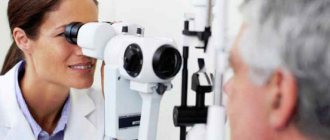What diseases does a neurologist treat?
- cardiovascular - hemorrhagic and ischemic stroke;
- infectious - damage to the central nervous system due to syphilitic and AIDS infections, herpetic encephalitis;
- degenerative - Parkinson's and Alzheimer's diseases;
- traumatic - bruises of varying severity, concussions, diffuse damage to axons in traumatic brain injuries;
- pathologies of the cerebrospinal fluid system - persistent increase in intracranial pressure, hydrocephalus;
- demyelinating - Guillain-Barré syndrome, multiple sclerosis;
- helminthiasis - opistrochiasis, echinococcosis;
- oncological - gliomas, meningiomas;
- mycotic - candidiasis, cryptococcosis of the central nervous system;
- epileptic - primary (without involvement of the brain matter in the pathological process) and symptomatic epilepsy caused by traumatic brain injury, tumors;
- congenital - cerebral palsy.
What does a neurologist treat?
The nervous system is one of the most complex and multifunctional structures in our body and, unfortunately, the number of diseases associated with it is also very diverse. The most common reasons for visiting a neurologist are: migraines, neuralgia, sleep disorders, depression, spinal osteochondrosis, intracranial hypertension and vegetative-vascular dystonia.
In addition, a neurologist diagnoses and prescribes treatment for diseases characteristic of old age, such as Alzheimer's disease, Parkinson's disease, senile dementia (senile dementia). Also, the scope of activity of a neurologist includes the treatment of such serious diseases as epilepsy, multiple sclerosis, and encephalopathy. The responsibilities of a neurologist include examining and treating patients who have suffered traumatic brain injury or surgery affecting the nervous system, as well as patients who have suffered a stroke.
How does an appointment with a neurologist proceed?
The initial consultation includes a survey and neurological examination of the patient. During the conversation, the doctor listens to complaints and asks additional questions. During the examination, reflexes and the presence of external signs are checked - symmetry of the shoulders and limbs, disorders of posture and motor ability. For a professional neurological examination, special instruments are used, the set of which depends on the nature of the disease. It could be:
- hammer (reflexes);
- needle, brush/cotton wool (deep and superficial pain sensitivity, respectively);
- tuning fork (susceptibility to vibration);
- compass (sensitivity at different points of the body);
- pens, pencils, keys (object sensitivity);
- dynamometer (muscle strength measurement).
Appointment with a neurologist at our medical center
A neurologist is a doctor who specializes in treating diseases of the nervous system. Most often, patients come to us with complaints of headaches, back pain, cramps, memory problems, numbness in the arms and/or legs, fainting and dizziness.
Neurologists attending appointments at our center
Shelukhin Alexander Andreevich Neurologist, functional diagnostics doctor
When should you contact a neurologist?
Consultation with a neurologist is mandatory for persons who have suffered a stroke, traumatic brain injury, or suffer from Alzheimer's or Parkinson's diseases
The European Center for Orthopedics and Pain Therapy employs highly qualified neurologists. Our specialists will help you find out the cause of complaints, make a diagnosis and offer a wide range of assistance depending on the pathological process and the patient’s condition. The Center has all the possibilities for high-quality rehabilitation of people suffering from diseases of the nervous system - the latest physiotherapeutic procedures, manual therapy, therapeutic massage.
Signs indicating possible damage to the nervous system are extremely varied. Experts advise not to delay a visit to a neurologist if the following complaints appear:
- migraine;
- headache;
- tinnitus, dizziness;
- weakness and imbalance;
- the appearance of unclear speech;
- numbness of the arms and (or) legs;
- back pain;
- feeling of anxiety, constant irritability (melancholy);
- decreased memory and attention;
- local increase or decrease in sensitivity;
- sudden tremors and convulsions;
Early consultation with a neurologist can be useful and necessary for patients of any age with the above symptoms. Our advice: early diagnosis is the best condition for successful treatment.
A consultation with a neurologist is practically no different from a consultation with another specialist and, like a visit to any doctor, you need to prepare for it. In this case, contacting a specialist will be as fruitful as possible. Let's consider these questions in detail.
How to prepare for your first appointment with a neurologist?
- Describe all your complaints.
An appointment with a neurologist involves a thorough description of the clinical picture with the slightest nuances, so it is important not to forget any detail that may be significant for making a diagnosis. In this regard, doctors recommend making notes in advance, in which you try to reflect all your complaints and sensations, their intensity and frequency. You need to talk about your psycho-emotional state, whether it has changed recently, whether problems with memory and attention have appeared.
- Remember all the illnesses you have suffered.
A separate item in the records should be devoted to chronic and infectious diseases, vaccines, injuries, operations and stress. If a person has (or had) bad habits and has consulted a narcologist, the psychiatrist should definitely tell them about it. The presence of allergies should also be noted.
- Make a list of questions.
Fix in advance the questions that are related to future treatment - the cost and duration of the course, the prognosis of the disease, modern diagnostic methods and their price, the need to consult other specialists, etc. Be sure to bring a pen and paper with you to take notes during your conversation with your doctor.
- Choose comfortable clothes.
Clothes should be clean and easy to remove, as the doctor may ask the patient to undress to examine him and check his reflexes. It is advisable that the top and bottom of clothing be separate if you have to undress to the waist.
- Remember about body hygiene.
Although this is an elementary point, many people worry before visiting a doctor and sweat. Therefore, in addition to the shower taken the day before going to the doctor, do not forget about wet wipes and deodorant, which should be on hand if necessary.
How is the first appointment with a neurologist?
A meeting with a doctor begins with an introduction and medical history.
- Anamnesis collection.
When collecting anamnesis, general questions must be asked - age, what the patient does, marital status, what complaints are of concern. The patient should be prepared to recall similar symptoms in his relatives. Then, as the overall picture emerges, the doctor will begin to ask more detailed questions. Even in a situation that is awkward for the patient, you should not be embarrassed by the doctor, since you have one goal - to find out the cause of the disease and eliminate it. Before the neurologist begins the examination, it is better to make sure that nothing is missed by looking at your home notes.
- Inspection.
First, the doctor evaluates the patient’s appearance - his gait, posture, manner of communication, pays attention to facial asymmetry, the presence of ptosis, and tremor. In addition to a general examination, the neurologist examines muscle tone and strength, checks deep and superficial reflexes and sensitivity using a special needle and hammer, and determines coordination of movements.
- Purpose of tests.
In addition to clinical tests of urine and blood, the doctor may offer instrumental examinations - ultrasound, MRI, electroneuromyography, Dopplerography of veins and arteries, etc.
- Treatment scheme.
If the diagnosis is not in doubt, then treatment will be prescribed immediately, and during repeated visits it will be adjusted. But, if the diagnosis is not clear, treatment is not prescribed at the first appointment. If necessary, the doctor can offer symptomatic therapy, but comprehensive comprehensive treatment will be offered only after the diagnosis is made, when the doctor has all the necessary examination data.
Diagnostic methods
Examination using instrumental and (less often) laboratory methods is an integral part of the diagnosis of neurological diseases and their complications. The choice of a specific technique is carried out taking into account the nature of the violations. In modern diagnostics, one or more studies from the following list may be used:
- magnetic resonance imaging, or MRI. The procedure is performed with or without contrast; a contrast tomogram has more accurate results;
- computed tomography, or CT scan, of the brain;
- echoencephalography (ECHO-EG), positron emission tomography (PET/CT);
- angiography of cerebral vessels;
- X-ray, ultrasound of the spinal column;
- myelography;
- ultrasound with Doppler (Doppler scanning);
- electroneuromyography (EEG);
- gamma encephalography (EEG).
For radiculitis and intervertebral hernias, a lumbar puncture may be prescribed. A number of diseases require blood and urine tests.
What does a neurologist look for?
A consultation with a neurologist, first of all, consists of an initial examination of the patient and collection of the necessary information to compile a medical history. The neurologist conducts a survey of the patient, which includes both standard questions about age, marital status, work, and more specialized ones to identify symptoms of neurological diseases and genetic predisposition to their development. After which the neurologist listens to complaints about symptoms that worry the patient. During the examination, the neurologist assesses the general condition of the patient’s nervous system and also determines the presence of symptoms of suspected diseases.
In the future, the neurologist may prescribe additional studies and tests to make a diagnosis, which may include both a general and biochemical blood test, and special studies, for example, electroencephalography (EEG), vascular Doppler ultrasound, magnetic resonance imaging (MRI) and other necessary methods diagnostics
This article is posted for educational purposes only and does not constitute scientific material or professional medical advice.
Principles of treatment
What does a neurologist do when there is already a diagnosis? Begins to treat the disease using different methods.
Medicines
To relieve acute pain and inflammation, medications are prescribed, and maintenance therapy is provided if necessary. Problems with blood vessels, concussions, epilepsy, and conditions after surgery almost always require medication.
Manual therapy
Manual therapy is a treatment with hands (from the Latin manus - hand), which helps eliminate functional blocks and muscle spasticity, normalize microcirculation and range of motion. Widely used for diseases of the joints and spine, neuroses.
Massotherapy
One of the most effective methods of treating neurological diseases, along with therapeutic exercises and physiotherapy. Using special techniques, the specialist gently influences the patient’s body to stimulate the body’s natural recovery processes.
Physiotherapy
Through physical techniques, it is possible to accelerate tissue regeneration processes, improve nerve conduction, thereby reducing the intensity of pain and inflammation.
Reflexology
The essence of the method is the impact on bioactive points to restore the disturbed balance. It is based on the idea of the body as an integral system, when one of its elements fails, others suffer.
Traction traction
Used to stretch limbs and muscles in case of bone fractures and diseases of the spine.
Kinesitherapy
“Movement treatment” is how this term is translated from scientific language. This is a type of physical therapy that combines medical, physiological, and biochemical aspects.
Osteopathy
This is a method similar in effectiveness to massage and manual techniques. But, unlike them, it affects the very cause of the disease, helping to restore the well-coordinated functioning of the body.
Therapeutic blockades
For severe pain that cannot be relieved with conventional medications, the sore spot is injected. Injections are made directly into the painful area, hitting the nerve endings. The procedure relieves a person from pain in a matter of minutes for a period of half an hour to several days.
When to see a neurologist
Symptoms that should be addressed to a neurologist include alarming manifestations of disorders of the nervous system.
You should definitely contact a neurologist if you experience:
- frequent and severe headaches;
- migraine;
- sleep disorders (such as insomnia, frequent awakenings, etc.);
- noise in ears;
- numbness or tingling sensation in the limbs;
- back pain;
- memory impairment;
- impaired coordination of movements;
- dizziness, fainting, disturbances of consciousness.
If such symptoms appear, it is advisable to contact a neurologist or therapist, who will arrange a consultation with the right specialist. In any case, neurological symptoms should not be ignored.








